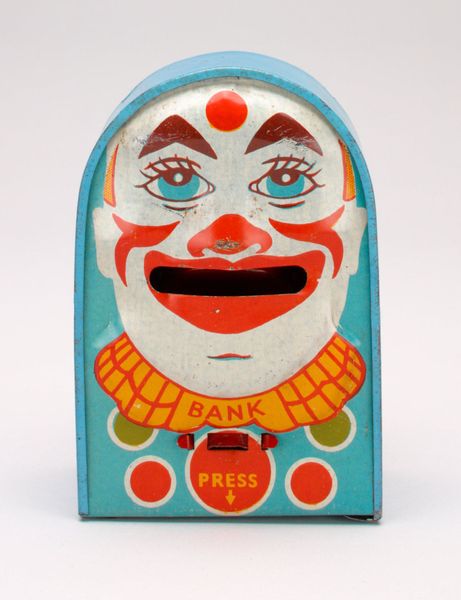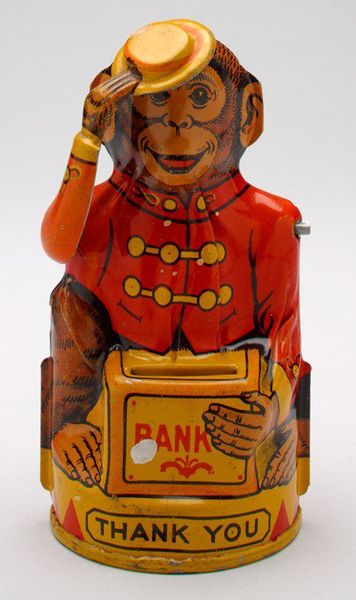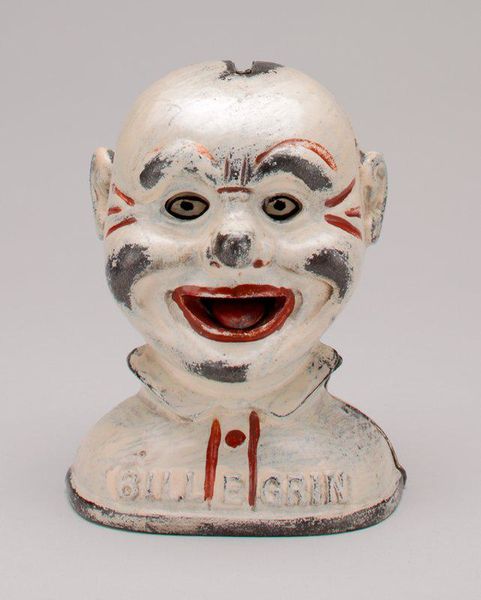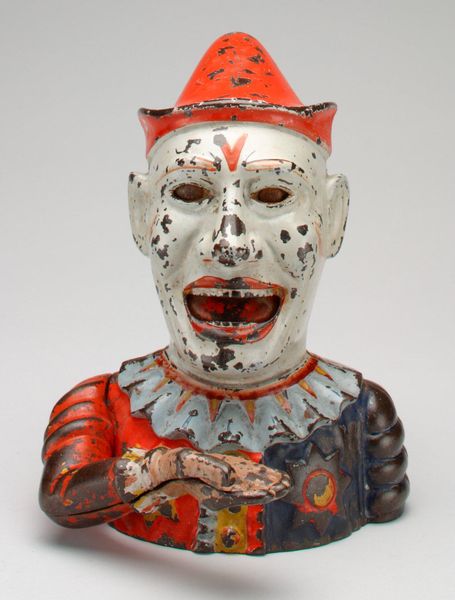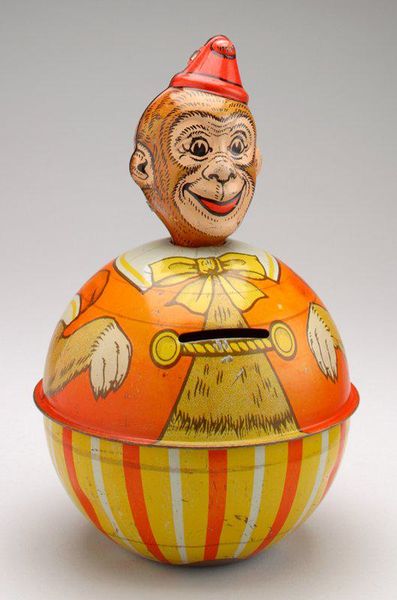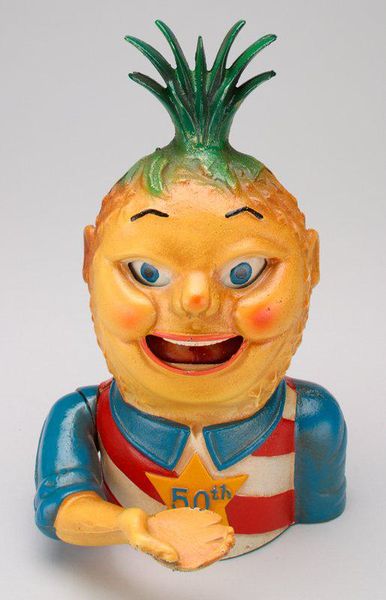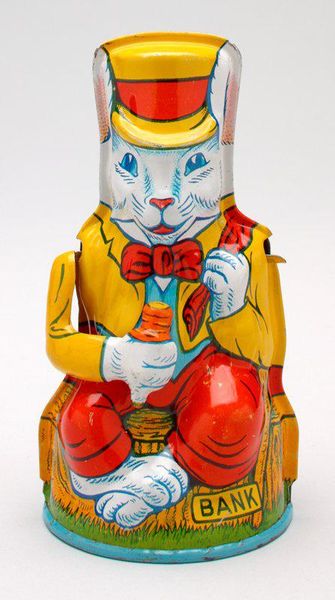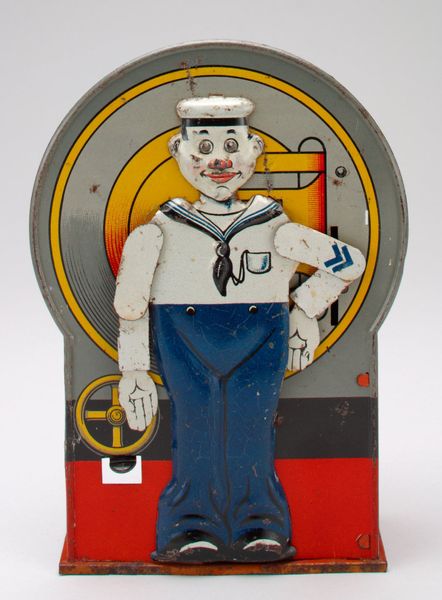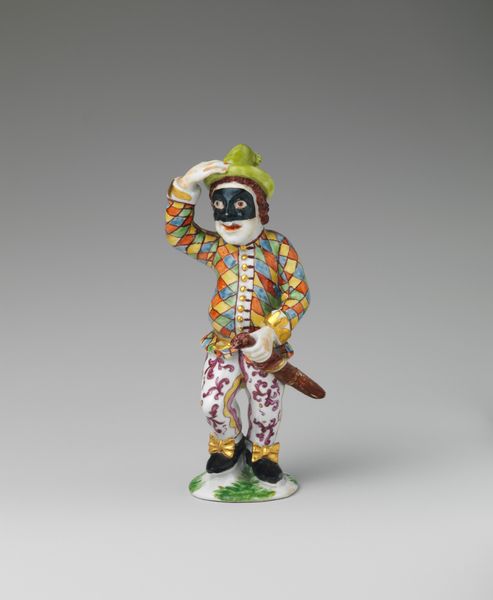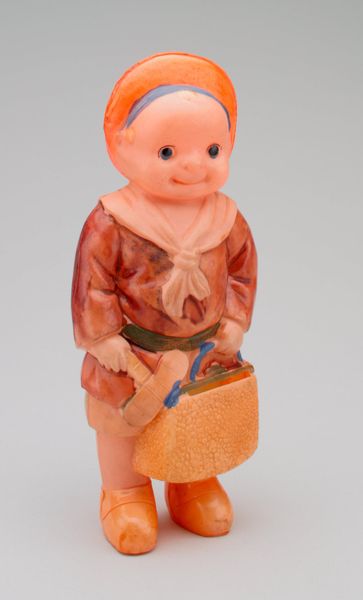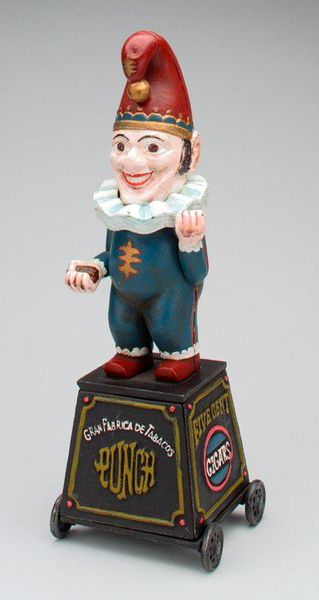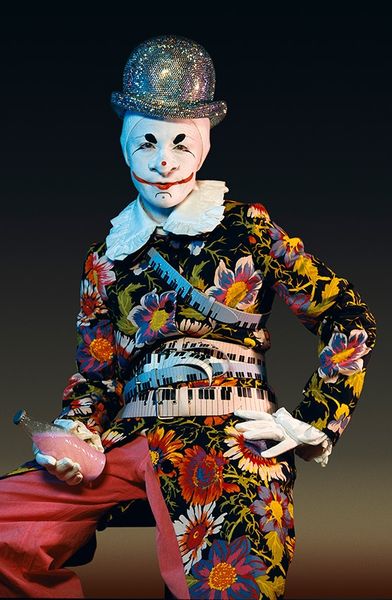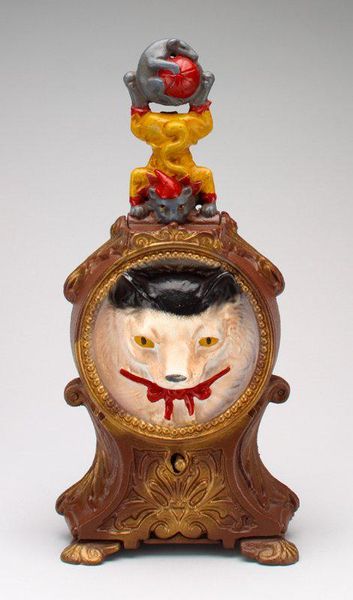
metal, enamel
#
portrait
#
metal
#
caricature
#
enamel
Dimensions: 5 1/8 x 2 5/8 x 2 1/2 in. (13.02 x 6.67 x 6.35 cm)
Copyright: No Known Copyright
Curator: Just look at that vacant stare and rigid structure; the piece named "Clown," which comes to us from J. Chein & Company, circa the late 1930s, exemplifies a peculiar intersection of portraiture and caricature. Editor: Initially, it's the enameled metal that catches my eye. It looks almost mass-produced. You can sense the layered processes, the hands and machinery both playing a part in its construction as an object that serves a capitalistic agenda: a "bank". Curator: Absolutely. Consider the carefully constructed facial features: the circular nose mirroring the circles dotting the chest. The artist seems preoccupied with contrasting shapes, aren’t they? What meaning do you suppose resides in this formalism? Editor: I’m thinking about the history of tin toys. J. Chein was all about affordability and ease of production. Look closely; it feels as though this "Clown" object was conceived to entice—then programmed, if you will, for eventual discard. The base materials are just coated tin. What else could it be? Curator: Precisely. Now observe how the cool blues on the chest sharply contrast with the face's warm tones. This juxtaposition enhances the emotional dissonance—a childlike figure with almost sinister undertones. Editor: I think we see clearly the social underpinnings of consumption as well. The "press" detail for instance hints at industrial repeatability and a production speed vital to mass markets. How did access to and consumption of commodities and material change? This work embodies it. Curator: The caricature aspect of the Clown also is striking. What function do such features as those enormous eyelashes or that rictus smile serve? Are they innocent, are they terrifying or, rather, something else entirely? Editor: And those colors—the stark enamels meant to lure. The entire purpose of Chein's operation was the allure of cheap goods manufactured, then discarded in favor of buying more cheap goods and then more; the raw stuff becomes very important in any art produced by an organization with that ambition. Curator: I concur that this object isn’t only interesting formally but socially too. Thank you. Editor: Of course, reflecting on what something is, and where it may go and where it started makes all objects that much more compelling.
Comments
No comments
Be the first to comment and join the conversation on the ultimate creative platform.
